This week we’re going to spend some time looking at Sam Adams’ effort to find a funding source for his “Save Money – Save Lives” effort to maintain our streets while making them safer at the same time. Today we’ll look at the problem statement with slides taken from Sam’s neighborhood presentation.
Continued after the break…
Tomorrow we’ll look at busting some of the myths about transportation funding.

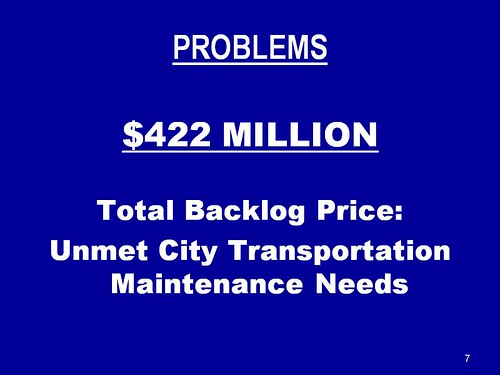

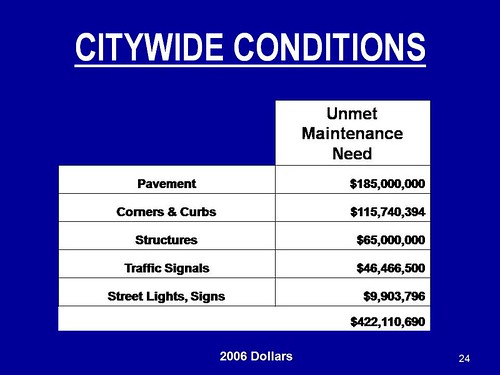
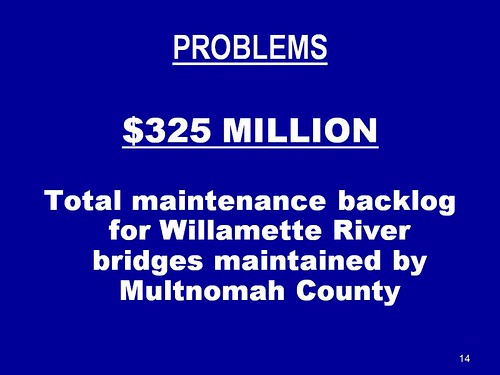

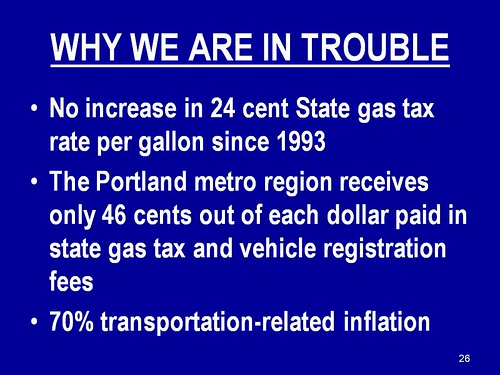
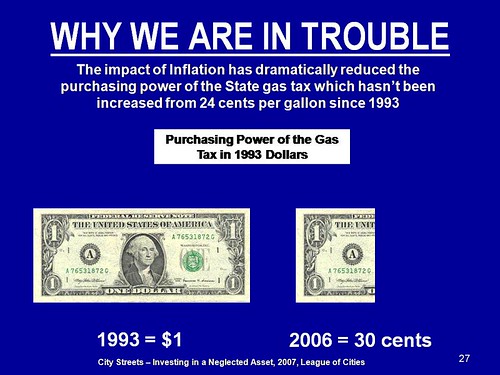


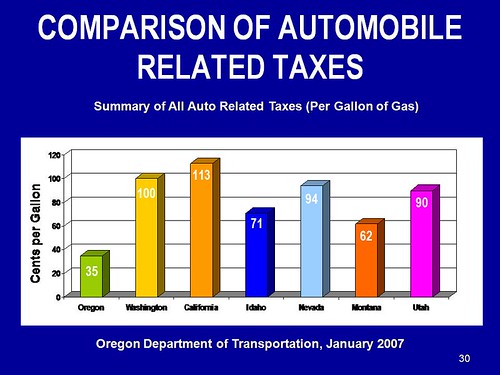
3 responses to “Maintaining Portland’s Streets: Defining the Problem”
Congestion pricing first, because that can be used for transit and accessibility, whereas gas taxes are dedicated to creating more of the same. The Portland metro area is the perfect city for congestion pricing—you have auto-sensors at I-5 bridge, I-205 bridge, I-84, and at I-5 south — say, just north of Wilsonville and then you have finer grain sensors installed on the surface roads to catch the locals who drive during congested periods.
Actually, the Oregon constitution would appear to limit money from congestion pricing to paying for roads as well:
revenue from the following shall be used exclusively for the construction, reconstruction, improvement, repair, maintenance, operation and use of public highways, roads, streets and roadside rest areas in this state:
(a) Any tax levied on, with respect to, or measured by the storage, withdrawal, use, sale, distribution, importation or receipt of motor vehicle fuel or any other product used for the propulsion of motor vehicles; and
(b) Any tax or excise levied on the ownership, operation or use of motor vehicles.
I’ve seen those slides at Adams’ meetings. The meeting focused on pavement, with Adams saying that any new taxes collected would go only to street maintenance.
However, it seems the skeptics were right all along:
http://www.portlandtribune.com/news/story.php?story_id=118402003727503400
According to the article, the police are looking to get a chunk of it
To prove his point, Kruger has proposed a six-month pilot project… (a)t a cost of $115,200…
So far, there is no money for the pilot project, however. The only potential money currently under discussion is the new local transportation funding source being considered by Commissioner Sam Adams.
… said that if the City Council or Portland voters approve a new funding source, $250,000 a year could be directed toward enhanced traffic improvements.
According to the handouts I got from the meeting, the only place it lists this is a one-line-item on a spreadsheet – nowhere in the presentation was this mentioned.
If this money goes straight to the police, would they really spend the money on traffic enforcement, or would they use it to arrest people minding their own business in their own home?